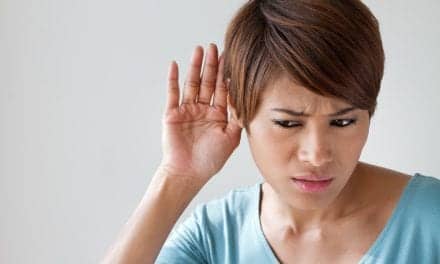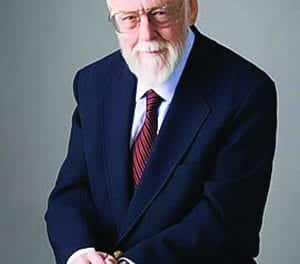Inside the Research | July 2019 Hearing Review
Jane Madell, PhD, has been a leading figure in pediatric audiology for the past 45 years. She is an audiologist, speech-language pathologist, and LSLS auditory-verbal therapist, with degrees from Emerson College (BA) and University of Wisconsin (MA, PhD). Her experience ranges from Deaf Nursery programs to leadership positions at the League for the Hard of Hearing, Long Island College Hospital, as well as Beth Israel Medical Center/New York Eye and Ear Infirmary as director of the Hearing and Learning Center and Cochlear Implant Center.
Beck: Good morning, Jane! I’ve been waiting a year or so to say this: It brings me great joy to say congratulations on the third edition of Pediatric Audiology: Diagnosis, Technology, and Management (Thieme Publishers, 2019)!1
Madell: Thanks, Doug. Yes, it was delayed a little, but it is available now. And, of course, I need to start by thanking my dear friends and co-authors Carol Flexer, Jace Wolfe, and Erin Schafer, as well as the dozens of other pediatric experts who contributed to the book.
Beck: And speaking of contributors, Jim Jerger wrote an extraordinary foreword for the third edition, in which he said something like processing and interpreting sounds starts with the ear perceiving sound, but the heavy lifting—processing and interpreting sound—requires the interaction of many areas of the brain. He noted that, in the last two decades, advances in hearing and hearing loss have gone beyond diagnostics, and major advances have occurred regarding brain-mediated cognitive processes associated with language development.
In the first few pages of the new book, page 3 boldly states: “Everything we knew and believed to be true about hearing loss has changed.” I love that quote. First, because it is correct, and second, because the curious mind immediately wants to learn more! The four of you (Carol, Jane, Jace, and Erin) say “The problem with hearing loss is that it keeps sound from reaching the brain…” and you state (more or less) the purpose of hearing aids, bone conduction devices, cochlear implants, brain stem implants, and more, is to access the brain.
Madell: Yes, that’s the focus. The reason we evaluate, diagnose, and manage hearing loss, particularly in children, is to maximize brain access and to provide the brain with the sounds required to maximally grow and learn language.
Beck: And, as you point out in Chapter 1 (and throughout your career!), hearing is just step one; it is not the end goal. The end goals are listening and understanding; that is, the ability to make sense of the words and sounds one perceives. Hearing is passive, hearing is perceiving sound—and that is clearly very important. But without the ability to actively comprehend, understand, or make sense of sound, hearing in and of itself is not very useful. All of which mandates that, besides hearing, we must assure that children and adults can understand, learn, and access speech in quiet and in noise—in the real world, not just in the soundbooth!
Madell: Exactly. Some of our colleagues in adult and pediatric audiology stop at audibility (hearing) without fully assuring the ability to listen and understand. Which is why I insist we must test with words in quiet and in noise, at normal and soft conversational levels, as happens with typical conversation and in the classroom. Of course, this approach to verification and validation is referred to as a “functional assessment,” which proves the specific technology is working for that patient. Importantly, functional assessment should replicate as much as is possible about the real world where that adult or child resides, hears, listens, and understands, using soft speech, speech in noise, and of course, speech perception in quiet, all at multiple loudness levels.
Beck: I agree. The core concept is if we don’t assess the technology in situ through measures of speech in quiet and speech in noise with the technology set to that patient’s use settings, we simply don’t know how that patient will perform in the real world. Electroacoustic measurements, while important, are not enough.
Madell: Of course, and this is a problem we can easily manage. Some audiologists do indeed practice high-technology fittings in accordance with AAA and ASHA Best Practice statements,and they might have amazing objective results regarding specific psychoacoustic measures. However, the most important result is the one that occurs with the technology programmed for the patient and worn as it will be used in daily practice in quiet and in representative background noise.
Beck: I think some professionals will argue they don’t have time for a speech-in-noise (SIN) test, yet it only takes 2 minutes to get a baseline SIN score and another 2 minutes to acquire an aided SIN score [eg, see Beck and Benitez, 20192] on adults. And of course, there are specific pediatric SIN tests available, too [eg, see Hillock-Dunn, 20153].
Madell: Exactly.
Beck: Back to the new textbook…I suspect most of the people reading this interview are familiar with the first two editions. If that’s the case, they will recognize some content areas, but they’re also in for updated, rewritten, and new content, too! Let me ask you about the two chapters that caught my eye, which offer additional insight for the pediatric audiologist. One of the chapters is about counseling parents, and the other is about empowering teenagers.
Madell: Perfect! Chapter 35 is the one by Jackson Roush and Garima Kamo, titled “Counseling and Collaboration with Parents of Children with Hearing Loss.” Chapter 36 is by Carrie Spangler and Gail Whitelaw, and their chapter title is “Empowering Teens with Hearing Loss.” These chapters are dynamic and a “must read” for pediatric audiologists.
Chapter 35 is about the importance of collaboration with, rather than just managing or directing, parents. It’s about recognizing and meeting the parents where they are, and helping them explore and meet their needs, for their child. Of course, the audiologist should not simply give directions and advice. We should work collaboratively to facilitate the best results for the child and the family.
Some key “takeaways” include the fact that the early diagnostic-based interactions between the audiologist and the parents may set the tone for all subsequent interactions, and so these first interactions are of maximal importance. And when you think about delivering the diagnosis to the parents, particularly in the first week or two after birth, realize that the parents probably haven’t observed any of the things you’re telling them! Finally, we need to be forthright in providing honest and realistic information, yet we also need to listen and reflect their needs, concerns, and priorities.
Chapter 36 is a fantastic chapter, too, and it addresses how to empower teens by establishing teen networks, thereby addressing the needs of the teenager regarding hearing loss, amplification, and their ever-changing and dynamic social needs. Keep in mind that adolescence and early adulthood is when one experiences the most changes and transitions. As such, audiologists need to address these issues, and the goals should include to encourage self-determination and to empower the teenager.
Similarly, Chapter 37 is a new chapter in this edition which I think will be of great value to both students and to practicing pediatric audiologists. It’s all about the comments and observations from parents. They talk about what they need from the pediatric audiologist, what they wish had been different when they received the diagnosis, and what was good or “not so good” regarding management of their child’s hearing loss. I have to say that we did not include everything, as there were some damning comments we eliminated. But everyone who provides services to children with hearing loss should benefit from this chapter.
Beck: Another highlight is Chapter 19, the all-new chapter by Arthur Boothroyd, titled “The Acoustic Speech Signal.” Arthur’s ability to explain speech acoustics is tremendous.
As we said earlier, the reason we fit hearing aids and cochlear implants (and more) is to access the brain. Arthur’s chapter defines and explores the speech information which the brain needs to maximally untangle and de-code the speech signal.
If you don’t mind, I’ll hint at some of Dr Boothroyd’s content. He reminds us that the average talker speaking 4 feet away from the listener has an average loudness of 60 dB SPL (and it naturally varies ±15 dB). Therefore, for the student 8 feet away (due to the Inverse Square Law), the loudness average is 54 dB; at 16 feet the loudness is only 48 dB. Therefore, that 60 dB average loudness has speech components which may be at 45 dB SPL and at 75 dB SPL. Dr Boothroyd also notes that, for a baby in his dad’s arms, the distance from the talker’s mouth to the baby’s ear is likely about 12 inches, and so the typical loudness at the baby’s ear might be 72 dB SPL. He also mentions there are typically some 4 words per second during conversational speech, which may mean 12-13 phonemes per second!
Finally, although there may be little speech information above 4000 Hz, the localization cues—interaural loudness differences and interaural timing differences, etc—residing at 4000 Hz and above are also very important. I could go on, but I do want people to review the chapter in detail, because it addresses and revisits foundational concepts like the Speech Intelligibility Index (SII), the Articulation Index (AI), and the important clinical context within which these things matter a great deal.
I could talk about this all day, but let’s switch topics to remote microphones. Do all children with hearing loss need remote microphones?
Madell: Absolutely. There is no doubt. Children and adults with hearing loss and/or listening difficulty absolutely need, and would benefit from, remote microphones. For a child with auditory processing disorder and normal hearing thresholds, or a child with a mild sensorineural hearing loss, or a child with auditory neuropathy spectrum disorder, or a child with a unilateral hearing loss, and more, they all require a remote microphone in noisy situations like classrooms and restaurants, and many other social situations. In fact, the article you and I co-authored in 2018 with about 20 other highly-respected audiologists from around the world speaks volumes about the benefits of remote microphones for adults and children, particularly given hearing difficulty and/or speech-in-noise problems.4
Beck: OK, Jane. I know I’ve run into overtime and I must let you run. The new book is a joy and a pleasure to read, and I am so glad it’s available. Honesty, I think of this as the new “Pediatric Audiology Bible” and I hope that doesn’t offend anyone. But I mean it in the very best way…it’s a wonderful and plentiful reference, and it’s something pediatric audiologists will go back to over and over…Thanks for all you do, and thanks very much for your time today.
Madell: My pleasure Doug. Thanks for your interest in our work and for the kind words about the book.
Correspondence can be addressed to Dr Beck at: [email protected]
Citation for this article: Beck D. Addressing the needs of pediatric patients and their parents: An interview with Jane Madell, PhD. Hearing Review. 2019;26(7):30-31.
References
-
Madell JR, Flexer C, Wolfe J, Schafer EC. Pediatric Audiology: Diagnosis, Technology, and Management. 3rd ed. New York, NY: Thieme Publishers;2019.
-
Beck DL, Benitez L. A two-minute speech-in-noise test: Protocol and pilot data. Audiology Today.2019;31(3):28-35.
-
Hillock-Dunn A. 20Q: Pediatric speech recognition measures. What’s now and what’s next! Audiology Online. 2015.
-
Beck DL, Danhauer JL, Abrams HB, et al. Audiologic considerations for people with normal hearing sensitivity yet hearing difficulty and/or speech-in-noise problems. Hearing Review. 2018;25(10):28-38.








